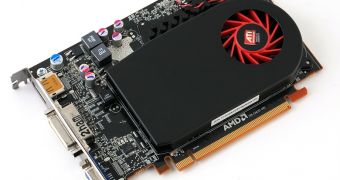A new slide detailing AMD's upcoming entry-level Radeon HD 7000-series graphics processors made its way to the Web, revealing that these are nothing more than a die shrink of the current Turks and Caicos cores.
The slide appeared on the Chinese Chiphell forum and describes AMD's dual-GPU support for the company's current Llano APUs.
In addition to the names of the current Radeon HD 6000-series graphics cards compatible with AMD's Hybrid graphics technology, the document also reveals the designations of some new 7000-series GPUs and the cores that these are based upon.
According to this info, the budget HD 7000-series GPUs in AMD's lineup will be noting more than 28nm die shrinks of the current Radeon HD 6000 graphics card.
This was to be expected from a couple of reasons, the most important being that AMD needed to retain the VLIW5 architecture for some of its next-gen cards for Hybrid graphics to work together with Llano APUs.
In addition, this move also allows AMD to identify and resolve all the issues caused by the transition to a new manufacturing node.
The chip maker has done this before with the HD 4770 when it moved to 40nm, and the Turks and Caicos-based Radeon HD 7000 parts serve a similar purpose.
Outside of these entry-level GPUs, AMD will also release a series of mid-range and high-end solutions, the former using the VLIW4 architecture introduced with the Cayman core (Radeon HD 6900-series), while the latter will be based on the Next-Generation Core (NCG) Arch.
These GPUs will use the Tahiti GPU and it has been recently uncovered that they will pack a 384-bit wide memory interface, while also being compatible with the PCI Express 3.0 standard.
No details regarding the release of any of these graphics processors are available at this time.

 14 DAY TRIAL //
14 DAY TRIAL // 
